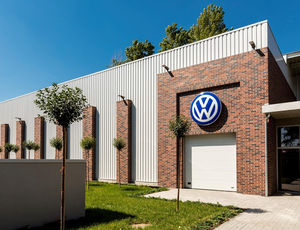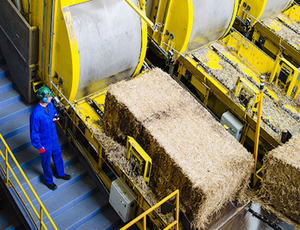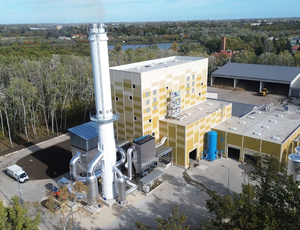Veolia provides innovative technologies and processes, guarantees the reliability of district heating networks, and offers modern and customizable district heating solutions.
What is district heating?
District heating involves generating heat in a centralized location and then distributing it to residences, businesses and industry in a local area.
What is the role of district heating in clean energy transition?
District heating networks offer great potential for efficient, cost-effective and flexible large-scale use of low-carbon energy for heating. However, the decarbonisation potential of district heating is largely untapped, as 90% of the heat supplied in district networks is produced from fossil fuels, especially in the two largest markets of China and Russia.
An example of what we achieved in Poland!
Where do we need to go?
Aligning with the Net Zero Emissions by 2050 Scenario requires significant efforts to rapidly improve the energy efficiency of existing networks, switch them to renewable heat sources (such as bioenergy, solar thermal, heat pumps and geothermal), integrate secondary heat sources (such as waste heat from industrial installations and data centres), and to develop new high-efficiency infrastructure.
In 2022 district heat production remained relatively similar to the previous year, meeting around 9% of the global final heating need in buildings and industry. As demonstrated by the best performing networks, district heating offers great potential for efficient, cost-effective and flexible large-scale integration of low-emission energy sources into the heating energy mix. However, the decarbonisation potential of district heating is largely untapped, as fossil fuels still dominate district network supplies globally (about 90% of total heat production), especially in the two largest markets of China and Russia.
Aligning with the Net Zero Emissions by 2050 (NZE) Scenario requires significantly stronger efforts to rapidly improve the energy efficiency of existing networks and switch them to renewable heat sources (such as bioenergy, solar thermal, large-scale heat pumps and geothermal). Other priorities include integrating secondary heat sources (such as waste heat from industrial installations and data centres), investing in heat storage capacities and enabling sector coupling, and developing high-efficiency infrastructure in areas with dense heat demand.
What we managed to do in Central and Eastern Europe!
Despite large potential for the integration of renewable sources and recycled heat, fossil fuels dominate district heat supplies globally
In 2022 the amount of heat produced for district heating networks globally was around 17 EJ, relatively similar to 2021, but about 10% more than 2020 and 17% more than a decade earlier. China, Russia and Europe are responsible for more than 90% of global district heat production, and China is currently recording the fastest growth in district network connections.
The district heating industry is transitioning to lower-temperature networks and integrating renewable energy sources
Innovative developments in district heating include solar thermal district heating systems, large-scale heat pumps, geothermal and waste heat integration, which all work best with low operating temperatures. Other solutions are also emerging, for example Bioenergy with Carbon Capture and Storage (BECCS), which is being explored in Sweden.
Decarbonisation efforts have not yet been sufficient to curb associated emissions though our success in this
Recognition of the good example - Energy efficiency certificate awarded to Veolia Energy Varna.
Our understanding of the challenge
Minimizing
environmental footprint thanks to renewable energies
Guaranteeing
the continuity & reliability of district heating & cooling operations
Promoting
access to essential services
Optimizing
district heating & cooling performance and efficiency
Valorizing
local heat, local cold & energy recovery sources
Guaranteeing
cost efficiency through stable energy price
Customer benefits
Reduced GHG Emissions
To make your city LIVABLE by improving the quality of life of residents and city's attractiveness.
Satisfied Residents
To make your city INCLUSIVE by improving the social sustainability of people
Optimized Systems
To make your city SMART by optimizing the system performance
Valorized Local Energies
To make your city CIRCULAR by reducing cities net use of resources.
Reliable & Robust System
To make your city RESILIENT by making it stronger & safer






